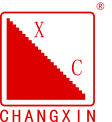With the increase in steel production, a large amount of scrap steel is also produced in the society, which provides conditions for electric furnace steelmaking in cast steel production. As electric furnaces that use electricity as heat energy, they can be divided into two categories. One isEAFs, which use electric arcs to generate heat to melt scrap steel, and the other is induction furnaces, which use electromagnetic induction to generate heat to melt scrap steel, especially mid-frequency induction. Electric furnace is the representative. Before the 1990s,EAFs were widely used. At that time, high-quality scraps were few, mostly mixed with bad ones, and it was not easy to sort. TheEAF technology was developed earlier and has a large capacity, and the intermediate frequency furnace technology development is not yet mature. After the 1990s, intermediate frequency electric furnaces were mostly used in steel casting plants. Especially in developed capitalist countries,EAFs were not allowed to be used, and intermediate frequency furnaces were generally used. With the improvement of energy saving and environmental protection requirements, the intermediate frequency technology has been greatly developed. From the previous maximum of several hundred kilograms to the current maximum of 50 tons, foreign countries have developed the largest intermediate frequency electric furnace of 100 tons, and the German technology is the best.

- The induction furnace heats up quickly and has high thermal efficiency. Its heat is generated inside the charge (liquid steel), so it heats up quickly. The heat of the electric arc in theEAF must be transferred to the molten steel through the slag after the charge is cleared, which is indirect heating. The thermal efficiency is poor. The furnace is in the shape of a basin, and a large part of the heat of the electric arc is dissipated through the furnace cover and the furnace wall.
- The oxidation burning loss of the elements in the induction furnace steelmaking is less. Because in the induction furnace steelmaking, there is no ultra-high temperature effect of the electric arc, so that the burning loss rate of the elements in the steel is lower.
- The composition and temperature of the molten steel in the induction furnace steelmaking are relatively uniform. Because it is the action of electromagnetic force, the inductor and the molten steel are mutually repelled, so that the molten steel in the center of the crucible rises, and the molten steel in the edge of the crucible Decline, and produce the phenomenon of molten steel circulating movement. This electromagnetic stirring effect promotes the uniformity of the chemical composition and temperature of the molten steel in the molten steel, and is beneficial to the floating of non-metallic inclusions in the molten steel.
- The ability of slag to participate in metallurgical reactions in induction furnace steelmaking is poor. In theEAF steelmaking, the temperature of the slag is higher than that of the molten steel, and the slag has a strong ability to participate in the metallurgical reaction. In the induction furnace, the slag is heated by molten steel and the temperature is low, so the ability to participate in the metallurgical reaction is weak. Therefore, in the induction furnace steelmaking, the effect of the metallurgical processes such as desulfurization, dephosphorization and diffusion deoxidation is worse than that of theEAF steelmaking.
- The requirements for the charge (scrap steel) of the induction furnace steelmaking are relatively high. Due to the weak metallurgical reaction ability of the induction furnace steelmaking and the emphasis on remelting, it needs better charge (good material, less rust and oil pollution), and the block shape cannot be large.
- Induction furnace steelmaking is more in line with environmental protection requirements, whileEAF steelmaking generates a lot of waste gas, waste slag and noise, and consumes high energy.

